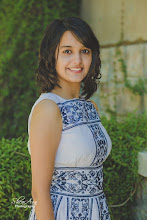I ran another gel this week to check the quality of two DNA samples that I extracted from blood in the previous week.
The results of this gel compared to the previous gel were much better and clearer. The bands were around 8,000 base pairs of nucleotides.
These bands light up due to the ethidium bromide (EtBr) added to the agarose gel. Since EtBr is positively charged, it easily binds to the negatively charged DNA fragments, and has the ability to fluoresces under UV light. Due to which, the DNA fragments show up under UV light as "bands".
The first column of the gel always contains a DNA Ladder, that has a mixture of DNA fragments of known sizes. Comparing the actual DNA samples to the DNA ladder helps with visualizing the size of the DNA Sample.
This is an example of a 1 Kb DNA Ladder that I use as a reference to figure out the quality and size of the extracted DNA in the agarose gel.
The results of this gel compared to the previous gel were much better and clearer. The bands were around 8,000 base pairs of nucleotides.
These bands light up due to the ethidium bromide (EtBr) added to the agarose gel. Since EtBr is positively charged, it easily binds to the negatively charged DNA fragments, and has the ability to fluoresces under UV light. Due to which, the DNA fragments show up under UV light as "bands".
The first column of the gel always contains a DNA Ladder, that has a mixture of DNA fragments of known sizes. Comparing the actual DNA samples to the DNA ladder helps with visualizing the size of the DNA Sample.
This is an example of a 1 Kb DNA Ladder that I use as a reference to figure out the quality and size of the extracted DNA in the agarose gel.



No comments:
Post a Comment